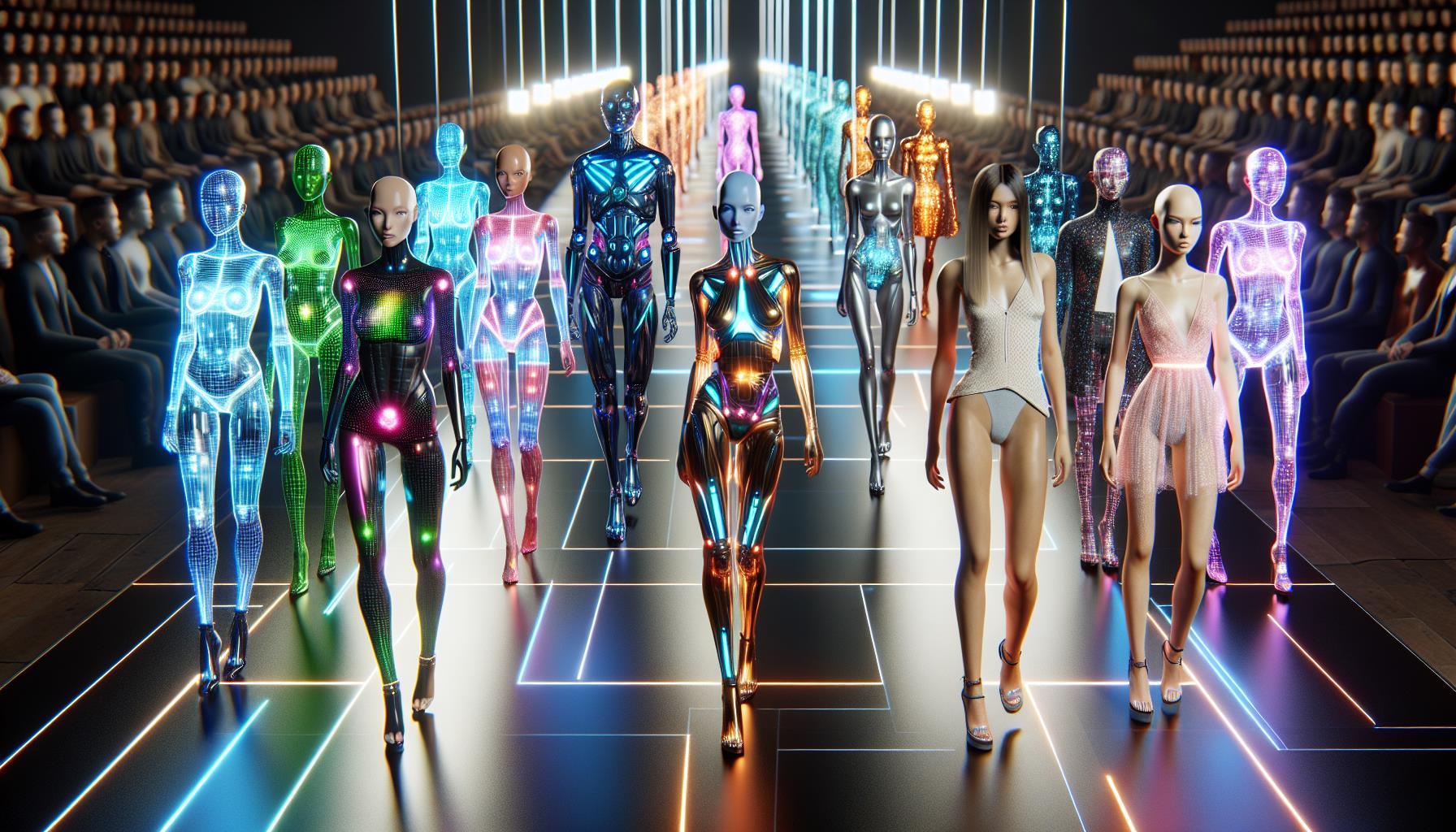In the rapidly evolving digital age, the fashion and advertising industries are witnessing a groundbreaking shift. Virtual models, powered by advanced Artificial Intelligence (AI) technologies, have started to emerge, creating a new frontier in the way brands engage with their audiences. These digital entities, with their flawless appearances and the ability to be in multiple places at once, represent a significant challenge to human influencers and models.
The creation of virtual models is not entirely new, but recent advancements in AI and computer graphics have made them more realistic and versatile than ever before. Unlike their human counterparts, these digital models do not age, gain weight, or require travel, making them a cost-effective and highly controllable option for brands looking to promote their products.
The Impact on Human Models and Influencers
Human models and influencers are beginning to feel the heat as virtual models gain popularity. Traditionally, the success of human influencers has relied on their ability to connect with their followers by sharing personal stories, lifestyle tips, and product recommendations. However, virtual models, with their perfect features and the ability to be customized to fit any brand’s aesthetic, present a new kind of competition that doesn’t tire or face the same physical limitations.
Despite these challenges, many industry experts argue that human influencers have a unique advantage over their AI counterparts: authenticity. The personal touch, relatability, and emotional connection that human influencers can create are not easily replicated by AI. This has led to a debate within the industry about the role of authenticity in influencing consumer behavior and whether virtual models can truly replace human interaction.
Brands’ Perspective
From a brand’s perspective, the appeal of virtual models is undeniable. They offer a level of consistency and control that is unmatched by human models. Virtual models can be anywhere at any time, speak any language, and be altered to fit any campaign or trend at the click of a button. This allows brands to execute global campaigns with ease and ensures their messaging is perfectly aligned across all markets.
However, some brands remain cautious, recognizing the value of human influencers in generating trust and loyalty among consumers. The balance between using virtual models for their efficiency and cost-effectiveness versus the genuine connection that human influencers can create is a strategic decision that each brand must make based on their audience and marketing goals.
Technological Advancements and the Future
The technology behind virtual models is advancing at an astonishing rate. AI algorithms are becoming better at mimicking human expressions and movements, making these digital entities increasingly lifelike. Furthermore, developments in virtual and augmented reality are opening up new possibilities for how virtual models can be used, not just in traditional media, but in immersive digital experiences.
As technology continues to evolve, it’s clear that the presence of virtual models in the industry will only grow stronger. This raises important questions about the future of work for human models and influencers and how they can adapt to remain relevant in a digital-first world.
Adapting to Change
For human models and influencers, adaptation is key. Many are already leveraging the same technologies that power virtual models to enhance their digital presence. This includes using AI-powered tools for photo editing, social media management, and personalized content creation. By embracing these technologies, human influencers can enhance their efficiency and engagement, ensuring they remain competitive.
Beyond technological adaptation, there’s also a growing emphasis on the unique value that human influencers bring to the table – their ability to tell stories, connect on a personal level, and generate an authentic following. As the industry continues to evolve, these human qualities may become more valuable than ever.
The rise of virtual models represents a significant shift in the fashion and advertising industries, challenging the traditional role of human models and influencers. While virtual models offer numerous advantages to brands, the importance of authenticity and human connection remains a critical factor. As the industry navigates this new landscape, the future will likely see a blend of both virtual and human elements, leveraging the strengths of each to create a more engaging and dynamic digital world.
In this rapidly changing environment, adaptability, technological savviness, and a focus on authentic connections will be key for human influencers looking to thrive alongside their virtual counterparts. The competition between AI and humans in the influencer space is just beginning, and it promises to redefine the industry in ways we are just starting to imagine.
